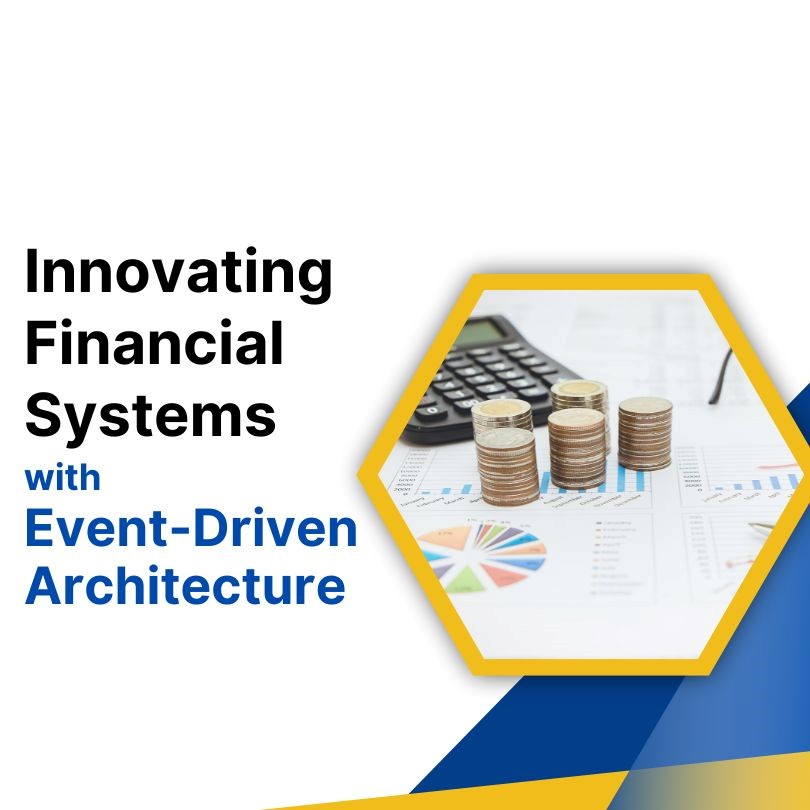In the fast-paced world of finance, where milliseconds can make the difference between profit and loss, innovative systems are essential for success. Event-Driven Architecture (EDA) is one such innovation that is reshaping financial systems. As described by Vinod Reddy Nomula, EDA empowers financial institutions to respond to high volumes of data in real-time, transforming how they operate and compete.
The Mechanics of Event-Driven Architecture
At its core, Event-Driven Architecture (EDA) is a design pattern that focuses on producing, detecting, and reacting to events, such as a trade execution, a payment being processed, or a market condition change. EDA consists of three primary components: event producers, event channels, and event consumers. Event producers, like trading platforms or payment gateways, generate the events, which then flow through event channels that can handle millions of events per second in financial systems. The final component, event consumers, are systems or services that react to these events in real-time—executing trades, detecting fraud, or updating risk management protocols efficiently.
Enhancing High-Frequency Trading and Beyond
The implementation of Event-Driven Architecture (EDA) has been particularly advantageous in high-frequency trading (HFT), where trades need to be executed within microseconds. Research shows that firms using HFT now account for more than half of the equity trading volume in the United States. With EDA, these firms can process millions of market updates and execute trades in nanoseconds, offering a critical competitive edge. Beyond trading, EDA is also widely applied in payment processing systems, enabling instant validation and settlement of transactions—crucial in today’s digital payments market, valued at over $5 trillion. EDA allows financial institutions to handle high volumes of real-time transactions while simultaneously detecting fraud, managing risks, and ensuring compliance with regulatory standards.
The Power of Real-Time Responsiveness
Real-time responsiveness is the hallmark of Event-Driven Architecture, enabling systems to react immediately as events occur, which significantly reduces processing times. A study revealed that financial institutions using real-time event processing saw a 60% improvement in transaction speeds and a 40% reduction in operational costs. One key example is in fraud detection, where modern systems leveraging EDA can analyze and flag thousands of transactions per second, allowing institutions to detect fraudulent activities within milliseconds. This not only reduces losses but also enhances customer trust by offering more secure services. Additionally, real-time responsiveness plays a crucial role in risk management, as it allows institutions to process market events and update risk exposure instantaneously, enabling better portfolio management and swift responses to market fluctuations, especially during periods of volatility.
Driving Innovation Across Financial Services
Event-Driven Architecture is a driving force for innovation in financial products and services, with one notable application being the creation of dynamic pricing models, especially in industries like insurance. Real-time data processing allows companies to adjust pricing instantly based on changes in risk, delivering more personalized and accurate services. Additionally, EDA’s ability to handle multiple events simultaneously provides financial systems with the scalability needed to thrive in an increasingly digital and interconnected world. During high-traffic periods, such as market surges or holiday shopping seasons, EDA enables institutions to scale rapidly without sacrificing performance or reliability. This scalability has become crucial as global markets expand, demanding systems capable of managing real-time financial transactions efficiently.
The Future of Finance with Event-Driven Architecture
As the financial industry evolves, EDA is poised to play an even more significant role in shaping its future. Financial institutions are increasingly adopting event-driven frameworks to stay competitive, improve operational efficiency, and meet regulatory requirements, while the rise of decentralized finance and cryptocurrencies further highlights the need for systems capable of processing vast amounts of data in real-time. According to recent studies, financial institutions that have implemented EDA have seen notable improvements in customer satisfaction, operational efficiency, and security. These advantages are positioning EDA as the go-to architecture for modern financial systems, enabling organizations to offer innovative services while maintaining robust operational processes.
In conclusion, Event-Driven Architecture is revolutionizing the financial sector, making it more agile, responsive, and secure. As industries continue to demand faster and more efficient systems, the adoption of EDA will only increase. Vinod Reddy Nomula highlights how this technology is setting new standards for performance and reliability, ensuring that financial institutions can continue to thrive in a rapidly changing landscape.

